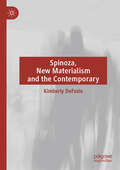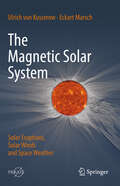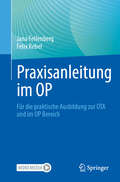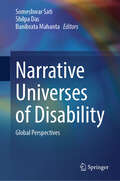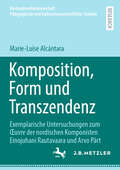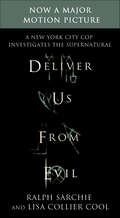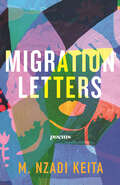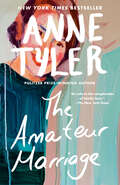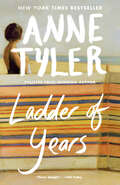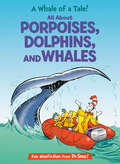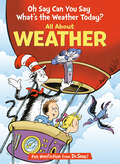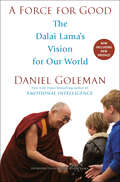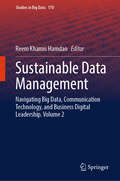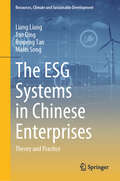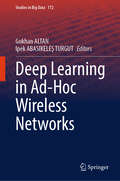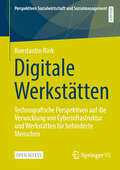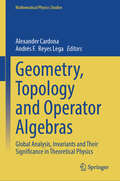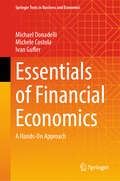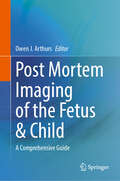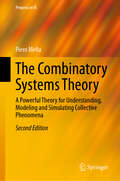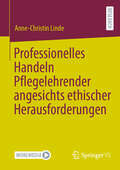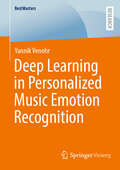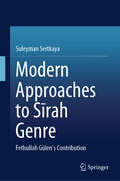- Table View
- List View
Spinoza, New Materialism and the Contemporary
by Kimberly DeFazioSpinoza, New Materialism and the Contemporary is a book about change. Through its border passing interpretations, it not only transforms the dominant contemporary views of Spinoza but, more significantly, it puts into question the assumptions of those that have produced the dominant view, such as Althusser, Negri, Deleuze, as well as the new materialism and the ontological turn, including Latour, Bennett and Braidotti. These interpretations deploy Spinoza as a trope by which they suspend the class contradictions of capitalism and construct a new spiritual capitalism. This book, through materialist analysis of Spinoza, puts class back in cultural theory.
The Magnetic Solar System: Solar Eruptions, Solar Winds and Space Weather (Springer Praxis Books)
by Eckart Marsch Ulrich von KusserowThis book describes a great variety of significant space plasma processes and the eminent influence that in particular magnetic processes have on the formation, structure and development of objects in our solar system. Supported by vivid graphics, real shots and links to video sequences, all these processes are, while being didactically prepared, explained thoroughly with few mathematical derivations. The book is written mainly for students, but also for amateurs or scientists from various fields interested in space science. It appeals to those who may want to gain a comprehensive overview of the far-reaching impacts of magnetic fields, on many things in our solar system, or beyond in extrasolar planetary systems and stars in the distant universe. The topics discussed here, with emphasis on magnetism, comprise the structure and dynamics of the solar system and its objects, the solar interior and atmosphere, the time-variable solar activity, the solar wind, processes in the heliosphere and planetary magnetospheres, as well as space weather. Scientific instruments, experiments and measurement methods are presented, with the help of which solar and plasma physicists, astrophysicists and planetary scientists can today gain their deep and fascinating insights. Theoretical and numerical results are interpreted and recent observations are explained, which were made by modern telescopes on Earth and obtained by satellites in space, through either optical remote-sensing and or in-situ plasma measurements.
Praxisanleitung im OP: Für die praktische Ausbildung zur OTA und im OP Bereich
by Jana Fellenberg Felix RebelDieses Buch richtet sich an Praxisanleiterinnen und Praxisanleiter im OP-Bereich und zeigt, wie die Anleitung von neuen Mitarbeitenden und Lernenden im speziellen Fachbereich OP gelingen kann und welche Aspekte dabei eine Rolle spielen. Es vermittelt nicht nur fundiertes theoretisches Wissen, sondern bietet auch praktische Ansätze und hilfreiche Materialien, um den Ausbildungsalltag effektiv zu gestalten.
Narrative Universes of Disability: Global Perspectives
by Banibrata Mahanta Someshwar Sati Shilpa DasThis volume explores and critically examines how disability is communicated to and comprehended by individuals and societies, focussing on the shaping of these narratives within diverse disciplinary environments, and their interrelation with institutions like academia. It delves into the intersection between disability and several new areas of study, such as translation studies, citizenship, inclusive design and accessibility, thereby broadening the scope of the discipline of disability studies. The volume highlights how disability embodiment shapes narrative structure, and challenges deeply entrenched ableist stratifications, hegemonies and hierarchies that prevail in the humanities and social sciences. It examines the theoretical, methodological and ethical narratives of human embodiment and disability by bringing together papers from various parts of the globe, from multiple disciplinary perspectives, focusing on diverse time segments, and dealing with different kinds of disability. Read together, the contributions to this volume reevaluate how disabled body-minds have been historically devalued down the ages, suggesting new ways of understanding/re-thinking this oppression and marginalization. This anthology is a valuable resource for students and researchers in cultural and critical disability studies.
Komposition, Form und Transzendenz: Exemplarische Untersuchungen zum Œuvre der nordischen Komponisten Einojuhani Rautavaara und Arvo Pärt (Kirchenmusikwissenschaft. Pädagogische und kulturwissenschaftliche Studien)
by Marie-Luise AlcántaraDie vorliegende Untersuchung widmet sich der Fragestellung, inwieweit sich intendierte kompositorische Transzendenz in ausgewählten Werken des Finnen Einojuhani Rautavaara und des Esten Arvo Pärt anhand formaler Gestaltungsmittel äußert. Dabei ist von besonderem Interesse, inwiefern transzendentales, also jenseits des Gegenständlichen und Begrifflichen liegendes Musikerleben in Form gegossen wird, die als solche mit musiktheoretischer Terminologie konkret beschreibbar und in gewissem Sinne sogar objektivierbar wird. Die musikalische Form steht im Fokus der Betrachtung, da die Auseinandersetzung mit gerade diesem Parameter für beide Komponisten zeitlebens ein zentrales Thema ist bzw. war. In der Untersuchung wird zunächst der Begriff der (musikalischen) Transzendenz für sich stehend unter mehreren Aspekten beleuchtet. Hierauf fußend werden mittels musiktheoretischer Analyse Rückschlüsse auf kompositorische Verfahren bei Rautavaara und Pärt formuliert. Dafür werden ausgewählte Werke beider Komponisten unter dem Blickwinkel des Umgangs mit traditionellen Formen und Gattungen einerseits und des Schaffens innovativer Formprinzipien andererseits untersucht.
Deliver Us from Evil: A New York City Cop Investigates the Supernatural
by Lisa Collier Cool Ralph SarchieDemonic possession. Exorcism. Haunted Houses. Satanic Rituals.For most people this is the stuff of nightmares, horror movies, folklore, and superstition. For New York City police Sergeant Ralph Sarchie, it's as real—and dangerous—as midnight patrol . . .A sixteen-year NYPD veteran, Ralph Sarchie works out of the 46th Precinct in New York's South Bronx. But it is his other job that he calls "the Work": investigating cases of demonic possession and assisting in the exorcisms of humanity's most ancient—and most dangerous—foes. Now he discloses for the first time his investigations into incredible true crimes and inhuman evil that were never explained, solved, or understood except by Sarchie and his partner. Schooled in the rituals of exorcism, and an eyewitness to the reality of demonic possession, Ralph Sarchie has documented a riveting chronicle of the inexplicable that gives a new shape to the shadows in the dark.In Deliver Us from Evil, he takes readers into the very hierarchy of a hell on earth to expose the grisly rituals of a Palo Mayombe priest; a young girl whose innocence is violated by an incubus; a home invaded by the malevolent spirit of a supposedly murdered nineteenth-century bride; the dark side of a couple who were literally, the neighbors from hell; and more. Ralph Sarchie's revelations are a powerful and disturbing documented link between the true-crime realities of life and the blood-chilling ice-grip of a supernatural terror.
Hell on Earth: The Wildfire Pandemic
by David L. Porter Lee ReederThe world is burning, and it appears that we are to blame. Conditions that create large-scale fire disasters are occurring more frequently every year, spurred on by global warming. And the potential for damage, loss of life, and greater harm to the environment is staggering.As devastating fires increase throughout the western and southern United States, the number of fires in the Brazilian rain forest continues to increase as well. Vast areas of the wilderness are dying throughout the West, setting the stage for a human and environmental tragedy.David L. Porter has been covering wild fires in the west for more than twelve years. After losing his home to a wildfire in 2003, he set out to find how and why this was happening, not only in the western US, but around the world. Hell on Earth chronicles the origins of these catastrophes as well as the effects they are having on our planet.At the Publisher's request, this title is being sold without Digital Rights Management Software (DRM) applied.
Migration Letters: Poems (Raised Voices #5)
by M. Nzadi KeitaA poetry collection that reflects on intimate aspects of Black history, culture, and identity, revealing an uncommon gaze on working-class Philadelphia from the 1960s to the present dayIn 55 poems, Migration Letters straddles the personal and public with particular, photorealistic detail to identify what, over time, creating a home creates in ourselves. Drawn from her experiences of being born in Philadelphia into a Black family and a Black culture transported from the American South by the Great Migration, M. Nzadi Keita&’s poetry sparks a profoundly hybrid gaze of the visual and the sensory. Her lyrical fragments and sustained narrative plunge into the unsung aspects of Black culture and explore how Black Americans journey toward joy.Propelled by the conditions that motivated her family&’s migration north, the poems pull heavily from Keita&’s place in her family, communities, and the world at large. They testify to her time and circumstances growing up Black in Philadelphia on the periphery of the civil rights and Black Power movements. Each poem builds upon an inheritance of voices: a panoramic perspective of an Easter Sunday service in a Black church gives way to an account of psychic violence in a newly integrated school; the collective voices of a beauty salon&’s patrons fragment into memories of neighborhoods in North Philadelphia that have faded over time.Migration Letters strives to tell a story about Black people that radiates across generations and testifies to a world that, as Lucille Clifton wrote, &“has tried to kill [us] and has failed.&” They interrogate how one&’s present begins in the past, what we gain from barriers and boundaries, and what notions of progress energize our journey forward. Keita&’s poems intimately reveal how Black culture can be inherited and built upon complex relationships where love and pain are inextricably linked.
The Amateur Marriage
by Anne TylerNEW YORK TIMES BESTSELLER • From the beloved Pulitzer Prize–winning author—a rich and compelling novel about a mismatched marriage and its consequences, spanning three generations They seemed like the perfect couple—young, good-looking, made for each other. The moment Pauline, a stranger to the Polish Eastern Avenue neighborhood of Baltimore (though she lived only twenty minutes away), walked into his mother&’s grocery store, Michael was smitten. And in the heat of World War II fervor, they are propelled into a hasty wedding. But they never should have married. Pauline, impulsive, impractical, tumbles hit-or-miss through life; Michael, plodding, cautious, judgmental, proceeds deliberately. While other young marrieds, equally ignorant at the start, seemed to grow more seasoned, Pauline and Michael remain amateurs. In time their foolish quarrels take their toll. Even when they find themselves, almost thirty years later, loving, instant parents to a little grandson named Pagan, whom they rescue from Haight-Ashbury, they still cannot bridge their deep-rooted differences. Flighty Pauline clings to the notion that the rifts can always be patched. To the unyielding Michael, they become unbearable. From the sound of the cash register in the old grocery to the counterculture jargon of the sixties, from the miniskirts to the multilayered apparel of later years, Anne Tyler captures the evocative nuances of everyday life during these decades with such telling precision that every page brings smiles of recognition. Throughout, as each of the competing voices bears witness, we are drawn ever more fully into the complex entanglements of family life in this wise, embracing, and deeply perceptive novel.
Ladder of Years: A Novel
by Anne TylerNEW YORK TIMES BESTSELLER • From the beloved Pulitzer Prize–winning author of Breathing Lessons"BALTIMORE WOMAN DISAPPEARS DURING FAMILY VACATION." The headlines are all the same: Beloved mother and wife Delia Grinstead was last seen strolling down the Delaware shore, wearing only a bathing suit and carrying a beach tote with five hundred dollars tucked inside. To the best of her family's knowledge, she has disappeared without a trace. But Delia didn't disappear. She ran.Exhausted with her routine and everyone else's plans for her, Delia needed an out, a chance to make a new life for herself and to become a different person. The new Delia can let go of all the hurt and resentment that left her stuck in her past. As she eagerly sheds the pieces of herself she no longer needs, Delia discovers feelings of passion and wonder she'd long since forgotten. The thrill of walking away from it all leads to a newfound sense of self and the feeling that she is, finally, the star of her own life story.
A Whale of a Tale! All About Porpoises, Dolphins, and Whales: All About Porpoises, Dolphins, and Whales (The Cat in the Hat's Learning Library)
by Bonnie WorthLaugh and learn with fun facts about whales, porpoises, dolphins, and more—all told in Dr. Seuss&’s beloved rhyming style and starring the Cat in the Hat! &“What&’s the story today? Funny that you should ask. We&’re going to take on a whale of a task!&” The Cat in the Hat&’s Learning Library series combines beloved characters, engaging rhymes, and Seussian illustrations to introduce children to non-fiction topics from the real world! Go under the sea and discover: • what a cetacean is• how to tell dolphins and porpoises apart• how whales &“talk&” to one another• and much more! Perfect for story time and for the youngest readers, A Whale of a Tale! All About Porpoises, Dolphins, and Whales also includes an index, glossary, and suggestions for further learning. Look for more books in the Cat in the Hat&’s Learning Library series!If I Ran the Horse Show: All About HorsesClam-I-Am! All About the BeachMiles and Miles of Reptiles: All About ReptilesSafari, So Good! All About African WildlifeThere's a Map on My Lap! All About MapsOh, the Lavas That Flow! All About VolcanoesOut of Sight Till Tonight! All About Nocturnal AnimalsWhat Cat Is That? All About CatsOnce upon a Mastodon: All About Prehistoric MammalsOh Say Can You Say What's the Weather Today? All About WeatherThe Cat on the Mat: All About Mindfulness
Oh Say Can You Say What's the Weather Today? All About Weather: All About Weather (The Cat in the Hat's Learning Library)
by Tish RabeLaugh and learn with fun facts about the sun, thunderstorms, snowflakes, and more—all told in Dr. Seuss&’s beloved rhyming style and starring the Cat in the Hat! &“You see, weather keeps changing, but one thing we know. It makes life exciting wherever you go.&” The Cat in the Hat&’s Learning Library series combines beloved characters, engaging rhymes, and Seussian illustrations to introduce children to non-fiction topics from the real world! Look up in the sky and learn: • how to read a weather map• what the water cycle is• how meteorologists forecast the weather• and much more! Perfect for story time and for the youngest readers, Oh Say Can You Say What's the Weather Today? All About Weather also includes an index, glossary, and suggestions for further learning. Look for more books in the Cat in the Hat&’s Learning Library series!If I Ran the Horse Show: All About HorsesClam-I-Am! All About the BeachMiles and Miles of Reptiles: All About ReptilesA Whale of a Tale! All About Porpoises, Dolphins, and WhalesSafari, So Good! All About African WildlifeThere's a Map on My Lap! All About MapsOh, the Lavas That Flow! All About VolcanoesOut of Sight Till Tonight! All About Nocturnal AnimalsWhat Cat Is That? All About CatsOnce upon a Mastodon: All About Prehistoric MammalsThe Cat on the Mat: All About Mindfulness
A Force for Good: The Dalai Lama's Vision for Our World
by Daniel GolemanThe Dalai Lama and the New York Times bestselling author of Emotional Intelligence present a revelatory and inspiring work that provides a singular vision for transforming the world in practical and positive ways.&“An optimistic and thoughtful primer with practical applications.&”—BooklistFor more than half a century, the Dalai Lama has guided us along the path to compassion and taught us how to improve our inner lives. A Force for Good combines his central concepts, empirical evidence that supports them, and true stories of people who are putting his ideas into action—showing how harnessing positive energies and directing them outward has lasting and meaningful effects. Daniel Goleman details the science of compassion and how this singular guiding motivation has the power to:• break such destructive social forces as corruption, collusion, and bias• heal the planet • reverse the tendency toward systemic inequity • replace violence with dialogue• counter us-and-them thinking • create new economic systems that work for everyone• design schooling that teaches empathy, self-mastery, and ethicsPoignant, motivating, and highly persuasive, A Force for Good shows how every compassion-driven human act—no matter how small—is integral for a more peaceful, harmonious world.
Handbook on Deradicalization and Rehabilitation of Violent Extremist Offenders in Bangladesh (SpringerBriefs in Environment, Security, Development and Peace #41)
by Imtiaz Ahmed Niloy Ranjan Biswas ASM Ali AshrafThis Handbook provides a theory-driven and policy-relevant analysis of terrorist offenders' deradicalization processes. It is the product of a multi-year collaboration between security studies scholars and counterterrorism practitioners. It offers a multidimensional strategy for the physical and cognitive disengagement of terrorists. It also charts a path for the community-based social reintegration of rehabilitated extremist offenders. The Handbook is targeted for both academics and practitioners in the field of counterterrorism. Those specializing in South Asia and the Global South will find this book a useful reference tool to comprehend and design the complex deradicalization processes and transform them into implementable practices.
Sustainable Data Management: Navigating Big Data, Communication Technology, and Business Digital Leadership. Volume 2 (Studies in Big Data #170)
by Reem Khamis HamdanThis book dives deeper into the dynamic world of data and technology with the Sustainable Data Management and explores advanced strategies and innovative approaches to harnessing big data, leveraging communication technology, and mastering digital leadership in today's evolving business landscape. Uncover insights and techniques that propel readers organization towards sustainable success in the digital age.
The ESG Systems in Chinese Enterprises: Theory and Practice (Resources, Climate and Sustainable Development)
by Tao Ding Liang Liang Malin Song Ruipeng TanThis book delves deeply into the ESG (Environmental, Social, and Governance) management systems of Chinese enterprises. It systematically analyzes the origins and evolution of ESG, taking into account China’s unique policy environment and market demands, and presents a localized ESG management framework tailored to Chinese companies. The book provides numerous case studies that illustrate how to effectively implement these frameworks in business operations, offering concrete guidance for achieving sustainable development. This book covers all aspects of ESG management, including comparisons of international standards, analysis of policy and legal frameworks, investment decisions, and corporate risk management. It is suitable for a diverse audience, including scholars, government officials, and corporate managers. By integrating theory with practice, the book provides forward-looking recommendations, offering strong practical guidance through case studies and empirical research to help companies improve their ESG management systems.
Deep Learning in Ad-Hoc Wireless Networks (Studies in Big Data #172)
by Gokhan Altan Ipek Abasikeleş TurgutThis book presents innovative applications of deep learning techniques in wireless ad-hoc networks, addressing critical challenges such as trust, routing, traffic management, and intrusion detection. By combining advanced AI models with real-world network scenarios, the chapters explore novel solutions for improving network reliability, security, and efficiency. Readers benefit from a multidisciplinary approach that bridges deep learning and wireless communication, offering both theoretical insights and practical frameworks. Targeting researchers, engineers, and graduate students, this work serves as a valuable resource for understanding and implementing deep learning strategies to optimize modern wireless systems. Whether improving IoT networks, securing controller area networks, or enabling smart mobility, the book provides actionable knowledge on Deep Learning applications for solving current and future challenges in ad-hoc wireless networks.
Digitale Werkstätten: Technografische Perspektiven auf die Verwicklung von Cyberinfrastruktur und Werkstätten für behinderte Menschen (Perspektiven Sozialwirtschaft und Sozialmanagement)
by Konstantin RinkDieses Open-Access-Buch widmet sich der Frage, wie sich heterogene Gruppen von Fachkräften in Werkstätten für behinderte Menschen mittels einer komplexen digitalen Informationstechnologie koordinieren, orchestrieren und Informationen mobilisieren. In der Sozialen Arbeit kommen zunehmend solche verschachtelten und kooperativen Informationstechnologien, sogenannte Cyberinfrastrukturen, zum Einsatz. Sie sind keine einfachen Arbeitsmittel, sondern können als polyvalente Organisationstechnologien verstanden werden, die sich durch einen ganzen Korpus von gegenseitig aufeinander verweisenden digitalen Artefakten wie Dienstanweisungen, Formularvorlagen, Diagnosetabellen oder Checklisten mit strukturierend auf Organisationen auswirken. Basierend auf technografisch erhobenen Forschungsdaten (Feldprotokolle, Artefaktanalyse & Interviewtranskripte) kommt die Studie zu dem Ergebnis, dass mit der Cyberinfrastruktur und deren praktisch realisierten Affordanzen eine spezifische Strukturierungsweise produziert wird. In der Verknüpfung mit räumlich-materiellen Arrangements entsteht in den Praktiken der heterogenen Fachkraftgruppen eine modulare Subjektform, eine exkludierende Machtkonstellation und eine netzwerkförmige Steuerungsweise.
Geometry, Topology and Operator Algebras: Global Analysis, Invariants and Their Significance in Theoretical Physics (Mathematical Physics Studies)
by Alexander Cardona Andrés F. Reyes LegaThis book offers a comprehensive exploration of contemporary intersections between geometry, topology, and theoretical physics, emphasizing their mathematical foundations and applications. Originating from lectures presented by experts during two summer schools held in Villa de Leyva, Colombia, the book reflects the synergy between global analysis, operator algebras, and their role in modern physics. The chapters present state-of-the-art developments on a wide range of topics: the geometry and topology of foliations, affine manifolds, C*-algebras, and the pseudo-differential calculus of boundary value problems. These are enriched by applications to the theory of topological quantum matter. The book is suitable for graduate students and researchers, offering detailed introductions to advanced topics such as the longitudinal index theorem for foliations, the geometry of the Poincaré half-space in a C*-algebra, and mathematical frameworks for topological matter. With a balance of foundational material and novel insights, it serves as both a learning resource and a reference for advanced studies at the intersection of mathematics and physics.
Essentials of Financial Economics: A Hands-On Approach (Springer Texts in Business and Economics)
by Michael Donadelli Michele Costola Ivan GuflerThis textbook offers a comprehensive guide to key topics in financial economics, seamlessly blending theoretical insights with practical applications. It covers essential areas such as portfolio allocation, asset pricing, empirical finance, and behavioral finance, providing students with a solid conceptual foundation through a combination of theory and real-world examples. Core topics include mean-variance portfolio theory, linear factor models for asset pricing, consumption-based asset pricing, the Black-Litterman asset allocation model, empirical cross-sectional asset pricing, and event studies. With a strong emphasis on hands-on implementation, the book integrates programming languages such as MATLAB, Python, Julia, and R, enabling students to apply financial models effectively. The book begins with a concise and standard review of decision-making under uncertainty, gradually advancing to topics such as intertemporal consumption choices and their impact on asset prices, before concluding with empirical tools for capturing market sentiment. By bridging fundamental and advanced finance concepts, it equips students with the necessary tools to navigate the financial landscape. Theoretical models are presented with transparency, avoiding the "black box" issue by clearly explaining mathematical derivations. This structured approach enhances learning and empowers students to utilize the provided code for key financial tasks, including portfolio management, risk analysis, and market sentiment analysis.
Post Mortem Imaging of the Fetus & Child: A Comprehensive Guide
by Owen J. ArthursThis book provides state of the art imaging and serves as a reference standard for anyone wanting to begin or improve their post mortem imaging in children. Divided into three parts, the book covers imaging principles and techniques, interpretation of post mortem imaging, and guidance on which imaging technique to use for which clinical scenarios. This is an ideal book for researchers and clinical hospital staff using post mortem imaging for children, including pathologists, radiologists, radiographers, technicians, mortuary staff, fetal medicine & obstetricians, ITU staff, forensic imaging staff and pathologists.
The Combinatory Systems Theory: A Powerful Theory for Understanding, Modeling and Simulating Collective Phenomena (Progress in IS)
by Piero MellaThis book adopts the logic of Systems Thinking and Control Systems, presenting a simple but complete theory called the Theory of Combinatory Systems. This new theory describes, interprets, explains, and simulates collective phenomena and their observable effects. Such collective phenomena – many of which are “one way", non-repeatable or reproducible – can all be described and understood using the model, as simple as it is general, of combinatory systems; that is, systems formed by collectivities, or populations of non-connected and unorganized individuals of some species, which appear to be directed by an invisible hand that guides the analogous actions of similar individuals in order to produce an emerging collective phenomenon. This edition includes enhanced theories such as an analysis of potential interactions between combinatory systems and their dynamics, highlighting the role of the environment in which such systems operate. It also includes new examples and enhanced figures that illustrate how combinatory systems are observed in social, biological and physical contexts.
Professionelles Handeln Pflegelehrender angesichts ethischer Herausforderungen
by Anne-Christin LindeDie Pflegebildung unterliegt aktuell vielfältigen Veränderungen und wachsenden Anforderungen. Lernende in der Pflegeausbildung sind zunehmend heterogen hinsichtlich ihrer Bildungsbiografien. Die Bedingungen in der praktischen Pflegeausbildung sind vermehrt geprägt durch Arbeitsverdichtung bei gleichzeitig komplexer werdenden Pflegesituationen. Professionelles Handeln bedarf gerade angesichts dieser konstitutiven und aktuellen Anforderungen einer Verantwortungsübernahme durch Pflegelehrende sowie ermöglichende Rahmenbedingungen. Professionell zu handeln bedeutet auch, situativ im Einzelfall ethisch begründete Entscheidungen zu treffen. Hierfür bedarf es einer ethischen Orientierung in Form einer Berufsethik. Für die Entwicklung einer Berufsethik Pflegelehrender muss mehr über deren ethische Herausforderungen in Erfahrung gebracht werden. Das vorliegende Buch beschreibt ethische Herausforderungen Pflegelehrender, um einen professionellen Umgang damit zu befördern.
Deep Learning in Personalized Music Emotion Recognition (BestMasters)
by Yannik VenohrMusic has a unique power to evoke strong emotions in us—bringing us to tears, lifting us into ecstasy or triggering vivid memories. Often described as a universal language, it conveys feelings that transcend words. But are machines, too, able to understand this language and capture emotions conveyed in music? This book delves into the field of Musical Emotion Recognition (MER), aiming to develop a mathematical model to predict the emotional content of music. It explores the fundamentals of this interdisciplinary research area, including the relationship between music and emotions, mathematical representations of music and deep learning algorithms. Two MER models are developed and evaluated: one employing handcrafted audio features with a long short-term memory architecture and the other using embeddings from the pre-trained music understanding model MERT. Results show that MERT embeddings can enhance predictions compared to traditional handcrafted features. Additionally, driven by the subjectivity of musical emotions and the low inter-rater agreement of annotations, this book investigates personalized emotion recognition. The findings suggest that personalized models surpass the limitations of general MER systems and can even outperform a theoretically perfect general MER system.
Modern Approaches to Sīrah Genre: Fethullah Gülen’s Contribution
by Suleyman SertkayaThis book offers a comparative analysis of contemporary approaches to the sīrah genre (biography of Prophet Muhammad). It explores the connection and juxtaposition of the sīrah genre with Islamic systematic theology (kalām), particularly in the context of the emergence of Islamic modernism. It also highlights the inherent interconnectedness of the sīrah and kalām disciplines. The book presents a careful study of Fethullah Gülen&’s reading and interpretation of the sīrah within the broader framework of modern debates, investigating his approach through the lens of the kalām discipline and the philosophy of sīrah. The author argues that reading the sīrah from the perspective of the kalām discipline, kalāmisation of sīrah, is a novel response to modern debates around the life of Prophet Muhammad. Kalāmisation of sīrah together with the notion of sīrah philosophy, represents a significant advancement in the field, providing new methodological and interpretative frameworks that are likely to define future trajectories of sīrah writings. Gülen&’s contributions are both ground-breaking and forward-looking, offering novel ways to engage with and understand the sīrah for a contemporary audience. This book is an essential resource for scholars and researchers in Islamic studies, theology, philosophy of religion, religious movements, and literature.
